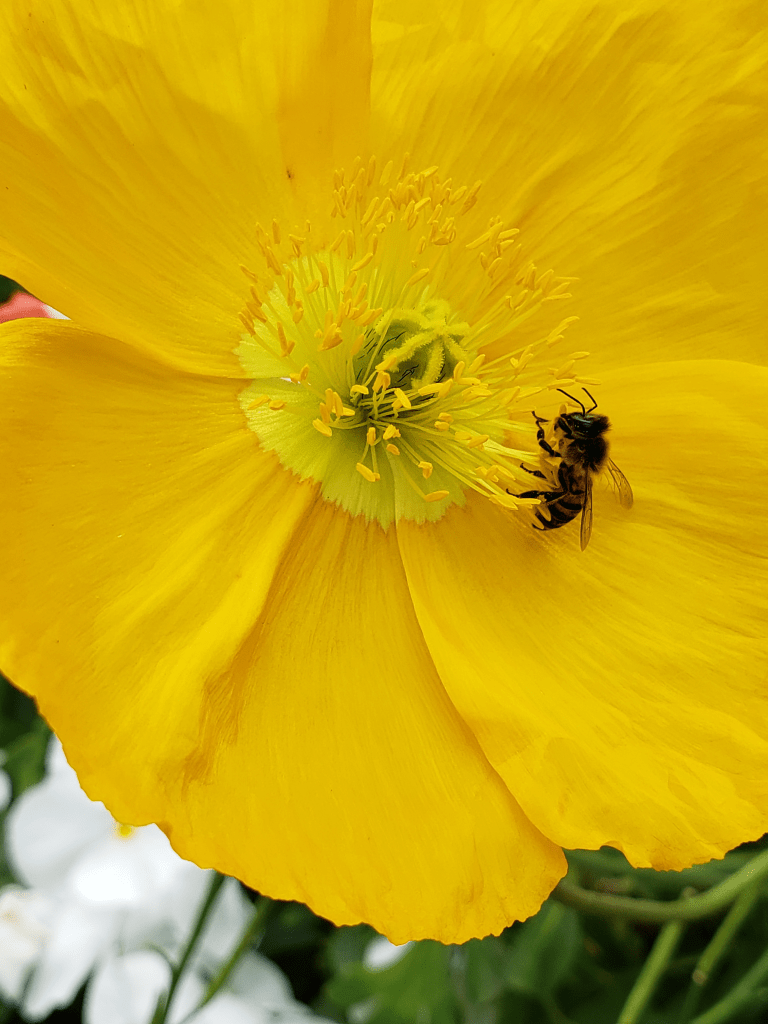Life at the Urban Oasis (aka Tucson Botanical Gardens)


Retirement snuck up on me. Due to unforeseen circumstances, I found myself looking for some volunteer opportunities in the Fall of 2014. What was I searching for? After identifying my several true loves (nature, science and art), I next spread a wide net to see which of the numerous non-profits in Tucson might be a match. And that match needed to serve two purposes: I had to feel engaged, connected, and of service. The recipient non-profit had to benefit from the skills I possessed that best matched the needs therein.
Starting as a volunteer, I soon became involved more deeply in the process of both learning about and sharing the delights of TBG with visitors from around the world. From the small but beautifully curated (and scented) herb garden to the magnificently weird cactus and succulent garden, to the ever-changing and eye-popping colorful palette of the floral pavilion, to the splendor and majesty of some 100-year old trees planted by the Porter family in the 1920’s it was – and is – a fabulous study in both arid-land natives and carefully tended plants from many geographical sources.
Did I mention the exotic tropical Butterfly greenhouse, the coolest rock and mineral collection of Harrison Yoakum, or the frequent visits by local and migrating birds and butterflies, or the ever-changing Porter Gallery art exhibits, often of nature-themed works? This public garden has it all.

From the earliest days, I wanted to add more to my knowledge of plant ID and interpretive skills, so I completed the Docent training offered to volunteers. Soon I was working on creating themed tours, the first of which was “Edible Plants of the Gardens” and featured both native foods (Agave, Prickly Pears, Chiltepin peppers, Mesquite flour, and Tepary beans), as well as heritage and introduced food plants (Mission figs, grapefruits, and pomegranates). It was pre-pandemic, so we were able to have a tasting experience for guests. Most savory, and a reflection of my own interest in Ethnobotany.

What next? I learned about the start of a new program in Tucson, the AZ Master Naturalist training and certification. And I found myself in the first class in Fall of 2016, armed with a lot of enthusiasm and my increased love for this Sonoran Desert and everything that grew, flew, crawled, swam or slithered within its boundaries. Having lived and hiked here for 40 years, it was incredibly gratifying (and humbling) to find myself in the good company of other “Desert Rats”, regardless of our professional status or prior training. And once I completed the AZMN training, I was able to add to my “tool kit” a deeper understanding of desert ecology to share with the visitors and staff of TBG. One of these was in the creation of a Nature’s Notebook trail (in conjunction with the USA National Phenology Network) in order to participate in the observation of life cycles of select native plants, birds, bees and butterflies. The NPN has as one of its goals the study of the impact of climate change on our native species.
Though small in comparison to other public spaces and botanical gardens, TBG (at 5.5 acres) is a splendid visual and psychological treat for visitors, local or international. I believe that many humans, especially kids, have become isolated from the natural world all around us, and it is crucial that Naturalists and Docents embrace the challenge of re-connecting people with this wonder. My favorite story? It was Spring and the Gardens were bursting with life. Two young adult women from Ontario, Canada were visiting Tucson, and TBG, for the first time. As I welcomed them, and pointed out some highlights that day, a small critter ran across the path in front of them. They both jumped back, a bit alarmed, and asked “What was THAT?” To which I replied, “Oh that’s a Spiny Lizard. They live here”. To which they replied in unison, “Cool!”
Yes, cool indeed. Nature, science and art. It’s the best volunteer job, ever.
Carol Anderson, Cohort 1, AZ Master Naturalist since 2017 with the Pima Chapter
Docent, Tucson Botanical Gardens since 2014

You must be logged in to post a comment.